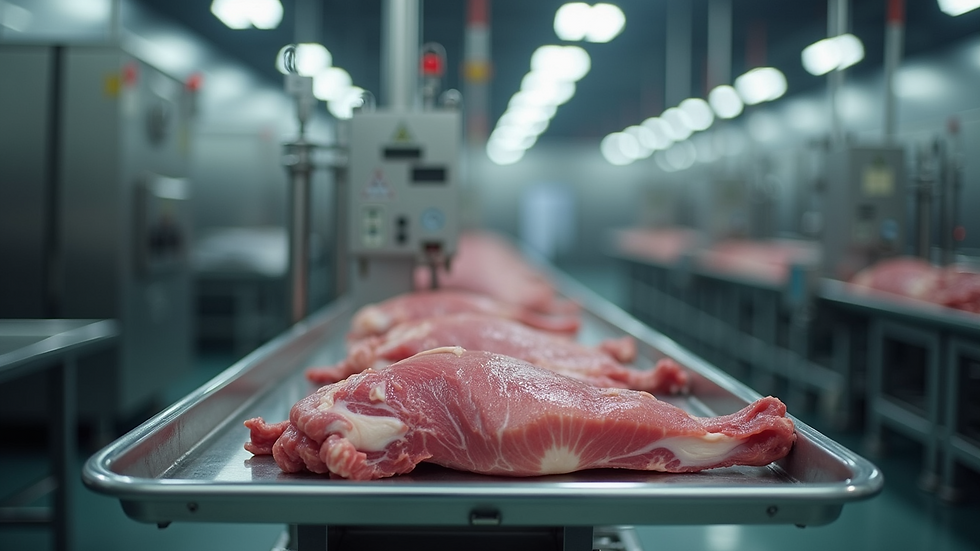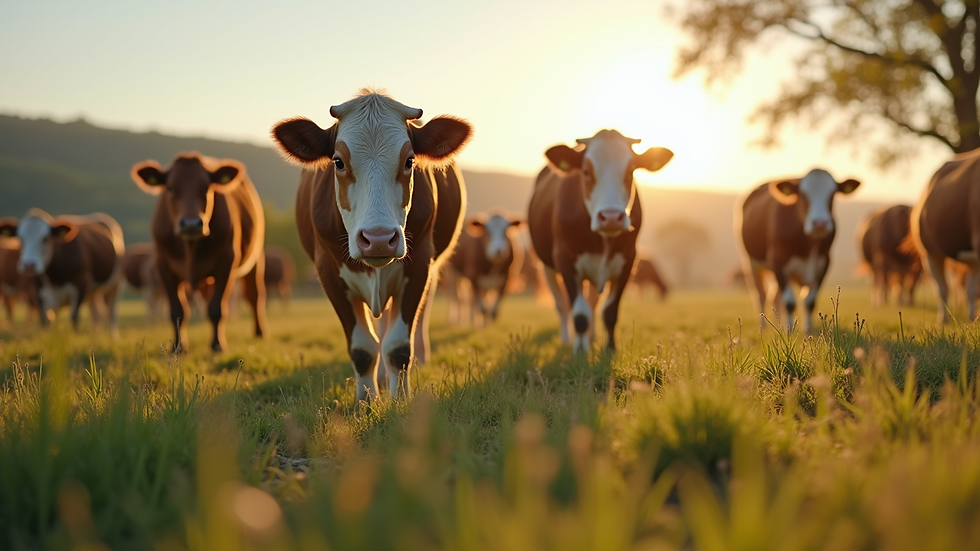How the Meat Industry Influences Global Food Trends
- Team @ Ezy Click Answers
- Aug 13
- 3 min read
The meat industry plays a significant role in shaping global food trends. From production methods to consumer preferences, this sector impacts what people eat and how food businesses operate worldwide. Understanding these influences helps us grasp the evolving landscape of food consumption and the challenges and opportunities within it.
The Meat Industry's Role in Shaping Food Preferences
The meat industry has long been a cornerstone of many diets, influencing food preferences across cultures. Meat products are often associated with tradition, nutrition, and culinary identity. As a result, the industry drives demand for specific types of meat, cuts, and preparations.
For example, the rise of gourmet burgers and specialty sausages reflects how the meat industry adapts to consumer tastes. Producers innovate by offering organic, grass-fed, or free-range options to meet growing health and ethical concerns. This diversification encourages consumers to explore new flavors and cooking styles.
Moreover, marketing campaigns by meat companies often highlight the quality and origin of their products, reinforcing consumer trust and loyalty. These efforts contribute to the popularity of certain meat types, such as Wagyu beef or Iberico pork, which become trendy in restaurants and home kitchens alike.

Economic Impact of the Meat Industry on the Global Food Market
The meat industry is a major economic driver within the global food sector. It supports millions of jobs, from farming and processing to retail and food service. This economic influence extends to shaping supply chains and pricing strategies that affect food availability and affordability.
In particular, the meat industry's scale and investment capacity allow it to influence the global food service market. Large meat suppliers often partner with restaurants, catering companies, and food retailers to ensure consistent product supply. This collaboration helps set menu trends and food offerings worldwide.
Additionally, the industry's focus on efficiency and innovation leads to advancements in meat processing and packaging. These improvements reduce waste and extend shelf life, making meat products more accessible to consumers in different regions.

Environmental and Ethical Considerations in the Meat Industry
Environmental and ethical concerns are increasingly influencing the meat industry and, by extension, global food trends. Issues such as greenhouse gas emissions, water usage, and animal welfare have prompted both producers and consumers to rethink meat production and consumption.
Sustainable practices like regenerative farming, reduced antibiotic use, and improved animal welfare standards are gaining traction. These changes appeal to environmentally conscious consumers and encourage the development of alternative protein sources, such as plant-based meats and lab-grown options.
The meat industry’s response to these concerns shapes food trends by promoting transparency and sustainability certifications. Consumers now look for labels indicating responsible sourcing, which influences purchasing decisions and menu planning.

Innovations Driving the Future of Meat Consumption
Innovation is a key factor in how the meat industry influences global food trends. Technological advancements and changing consumer demands are driving new product development and foodservice concepts.
One notable trend is the rise of plant-based and cultured meat alternatives. These products aim to replicate the taste and texture of traditional meat while addressing environmental and ethical issues. The meat industry is investing heavily in research and partnerships to integrate these alternatives into mainstream markets.
Another innovation is the use of data analytics and blockchain technology to improve traceability and food safety. This transparency builds consumer confidence and allows for more personalized food experiences.
Restaurants and foodservice providers are also experimenting with novel cooking techniques and fusion cuisines that highlight meat in creative ways, further expanding culinary possibilities.
Navigating the Changing Landscape of Meat in Global Diets
As global diets evolve, the meat industry must adapt to shifting consumer values and market dynamics. This adaptation involves balancing tradition with innovation and sustainability.
Consumers are increasingly seeking variety, health benefits, and ethical assurances in their food choices. The meat industry can meet these demands by offering diverse product lines, including leaner cuts, organic options, and meat alternatives.
Food businesses should also focus on education and transparency to build trust and encourage responsible consumption. Highlighting the nutritional benefits of meat alongside sustainable practices can help maintain its relevance in modern diets.
By staying attuned to these trends, the meat industry will continue to influence global food culture and contribute to a dynamic and resilient food system.



Comments